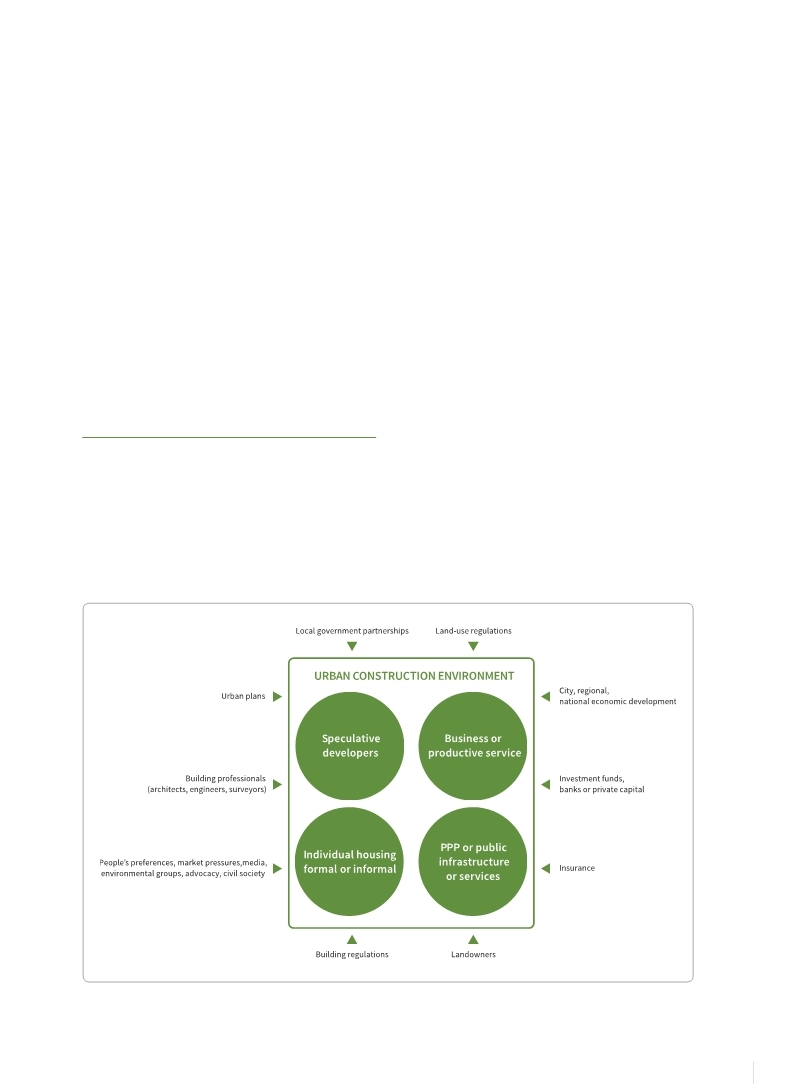 |
Global Assessment Report on Disaster Risk Reduction 2013
From Shared Risk to Shared Value: the Business Case for Disaster Risk Reduction |
 |
Global Assessment Report on Disaster Risk Reduction 2013
From Shared Risk to Shared Value: the Business Case for Disaster Risk Reduction |
|
|


|

Figure 8.2 Factors that influence the production of risk in urban construction
(Source:
 Johnson et al., 2012 Johnson et al., 2012 Johnson, C., Adelekan, I., Bosher, L., Jabeen, H., Kataria, S., Wijitbusaba, A. and Zerjav, B. 2012.,Private Sector Investment Decisions in Building and Construction: Increasing, Managing and Transferring Risks., Background Paper prepared for the 2013 Global Assessment Report on Disaster Risk Reduction., Geneva,Switzerland: UNISDR.. Johnson, C., Adelekan, I., Bosher, L., Jabeen, H., Kataria, S., Wijitbusaba, A. and Zerjav, B. 2012.,Private Sector Investment Decisions in Building and Construction: Increasing, Managing and Transferring Risks., Background Paper prepared for the 2013 Global Assessment Report on Disaster Risk Reduction., Geneva,Switzerland: UNISDR.. Click here to view this GAR paper. 124 Part II - Chapter 8
The sheer volume of investment in urban development and infrastructure expected in the coming decades means that the future of disaster risk reduction is at stake. If this investment takes place, as it has in the past, without factoring in risk considerations, then the new wave of urbanisation will be accompanied by another wave of disaster risk accumulation. This will threaten the resilience, sustainability and competitiveness of countries, cities and businesses alike. Conversely, if incentives and regulations to encourage risk-sensitive investment are put in place, the new wave of investment may become a unique opportunity to further disaster risk reduction.
8.3
The urban
development process
Part of the disaster risks produced through investments in urban development and infrastructure are spread across communities and sectors to become shared costs. These shared costs are produced through large numbers of individual
public and private investment decisions and non-decisions taken over the long term—making it difficult to attribute responsibility.
Urban development as a business sector involves a wide range of stakeholders. These include landowners and those who buy land and property for speculative development; building professions that design and supervise construction; banks, investment funds and others that finance urban development; construction and engineering businesses, which range from huge multinationals to local building companies; the insurance industry; utility and service providers; and public sector bodies that are meant to plan and regulate urban development.
As Figure 8.2 below shows, business investments in urban development are influenced by a range of factors and involve different stakeholders. The urban development process typically moves through a process that includes several stages: pre-project (developing the design brief, concept and technical
|



 |
